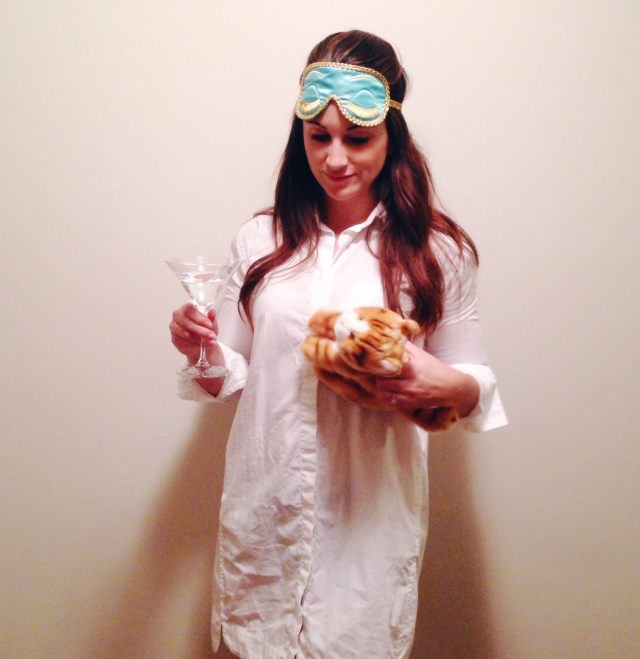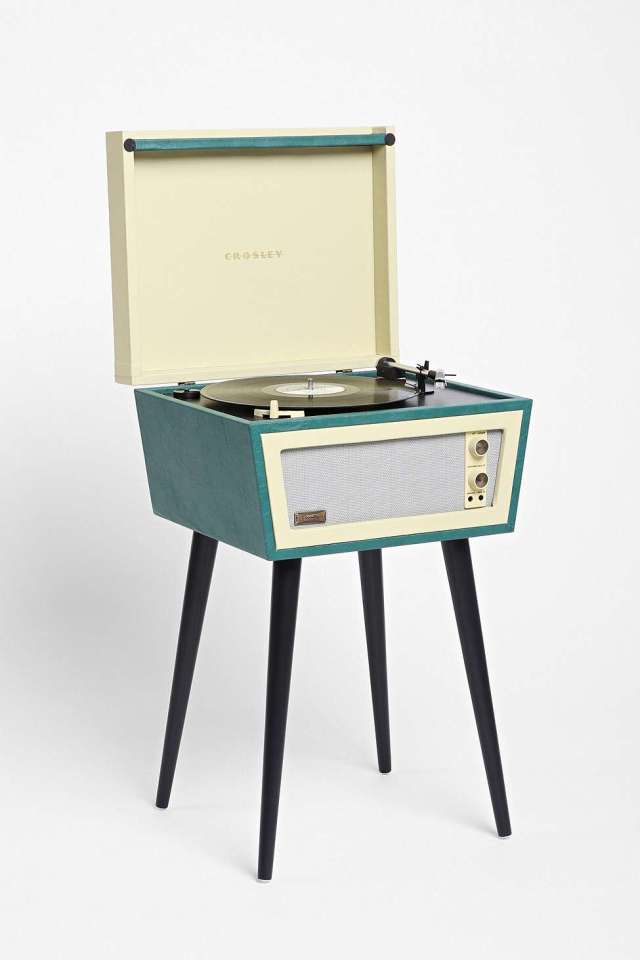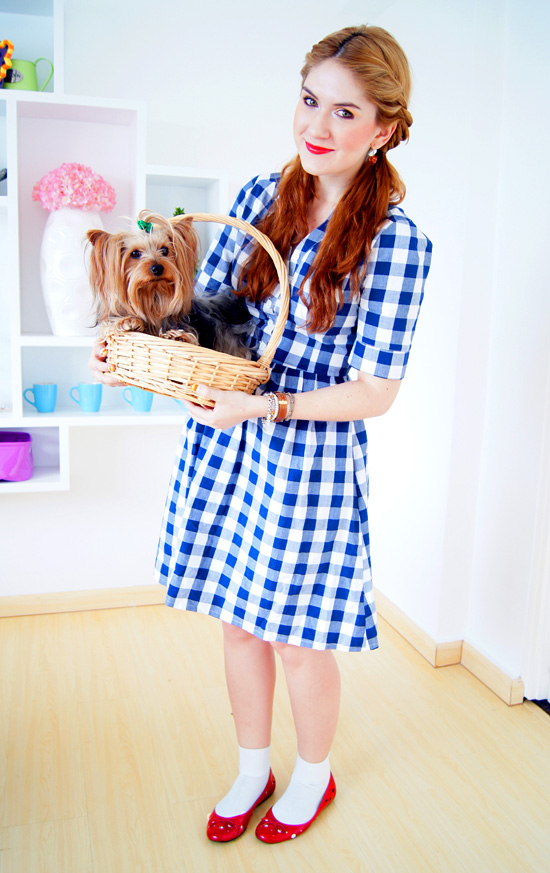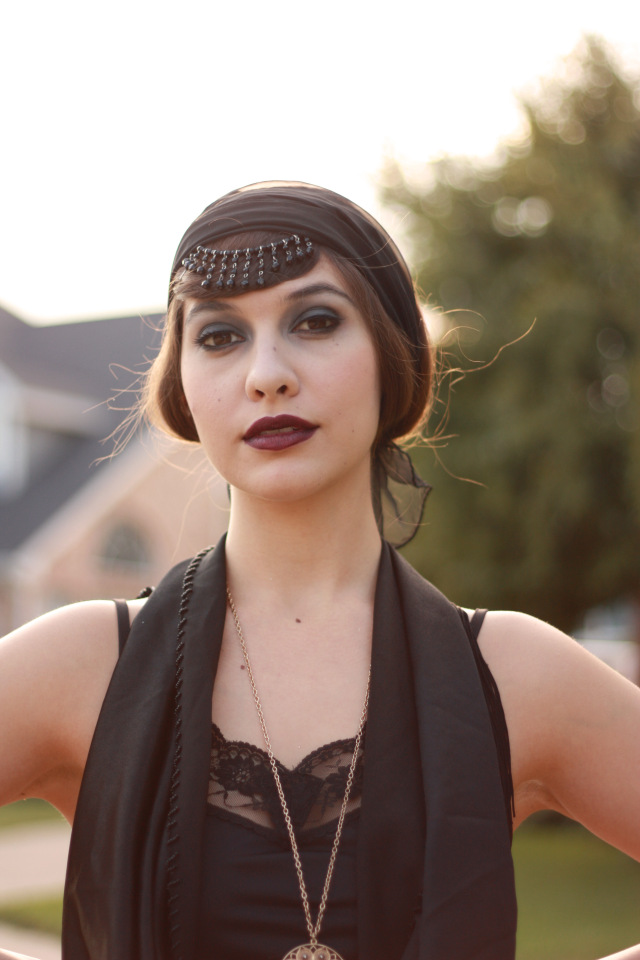Tips on Buying Authentic Handbags at the Thrift Store
I’d been looking for years and there it was. In a sea of others. Its back to me, facing the wall. I could tell it was special. The textured navy body, the British tan leather piping, the top handle, the contrasting stitching. Could it be? I raced to it, apologized to the small child I had nearly trampled, held my breath, and flipped it over, looking for the tell-tale stamp: the words “Dooney & Bourke All Weather Leather” and the infamous duck logo.

It was even prettier than I thought it would be. And in excellent condition. Nary a scuff, scratch, or pen mark. I almost couldn’t bear to look at the price tag. I had come across others in thrift stores before, in worse condition, but the price was always at least $75. Now for the second moment of truth (the first, of course, being the duck-or-no-duck revelation). Could I afford to take this baby home with me? Tell me your damage, Dooney!
$14.99. Yes, yes I could afford to take it home.
Next to vintage Coach bags, I would say Dooney & Bourke purses rank second for most sought-after vintage bag on etsy (based on absolutely no real evidence so do with that what you will), and to find one so cheap had made me gleeful. So gleeful that I did absolutely nothing to check the authenticity of the bag. I tossed it in my red, plastic basket-cart-thing (dear Value Village, what is this thing and why do none of the wheels work and how come I keep banging myself in the shins with it?) and strutted my stuff to the check-out line, where I enthusiastically put chip-card to card reader faster than you can say, “Check for a serial number first.”
And then I got home.
Did some internet research here, here, and here.
And discovered it’s a fake.
But look how cute it looks with this vintage plaid cape:

Here are some telltale signs of a fake handbag and things you can be on the lookout for when you’re standing under the florescent thrift store lights, trying to make a decision about whether that too-good-to-be-true designer bag is actually too-good-too-be-true:
- Check the logo.
Make sure the lettering on the label is in the right font. I was duped by the duck, but once I got home, I really examined the font of the writing surrounding the duck and compared it to the authentic labels I found online. On an authentic Dooney & Bourke label, the lettering is in a serif font; on mine the lettering is sans-serif.
Shopping tip: pull up the logo on your phone, enlarge it, and compare it to the logo on the bag. Look for the slightest discrepancies or irregularities. Word to the wise: companies don’t just up and choose Comic Sans for no good reason.
My fake label. 
Authentic label via Vintage Dooney. - Check the stitching.
The stitching should be straight and evenly spaced. Crooked or unevenly spaced stitches (or loose stitches) are signs of an imposter. The stitching on my bag compared to the authentic looks a bit amateurish and the stitches don’t form the most perfect circle.
Shopping tip: check for stitches gone awry.
- Look for labels.
A lot of designer bags (especially if they’re vintage) will be made in the USA and will have a label saying so. They likely will also have serial numbers. This might seem like a no-brainer, but I actually forgot to check (I blame the euphoria that comes along with the hunt!) until I got home.
Mine doesn’t have a label anywhere inside the bag (and it doesn’t appear that one has been cut out in any way), and according to my research, authentic Dooney & Bourke bags will have a white label with blue lettering, the words “Dooney & Bourke Inc. Made in USA” in a red box, and a serial number on the reverse of the tag.
Vintage Coach bags, on the other hand, will have an interior leather label with a registration number, country of origin, and the Coach creed.
Shopping tip: don’t forget to look inside the bag; use your phone to google what the interior label is supposed to look like and make sure your thrift-store find has one too.
- Feel it.
My authentic vintage Coach bags are made of the softest leather: they actually feel expensive to the touch. This fake D & B bag is stiff and hard; I really doubt it’s leather at all. The shoulder strap feels very thin and plastic-y; in comparison, the shoulder strap of my vintage Coach is about double the thickness and feels like butter.
Another thing to look for is peeling: real don’t peel.
Shopping tip: Make sure the bag feels soft and pliable. Does it feel like it’s from Nordstrom or Target? Your fingers can tell.
Do what I didn’t do in the store and notice the peeling on the right side of the bag.
- Examine the details.
Expensive, designer bags will use expensive hardware. Check the clasps and buckles. On Coach and Dooney & Bourke bags, these are made of solid brass so they shouldn’t have any silver showing (otherwise they might be nickel), and they should feel weighty, not light (otherwise, they might be painted plastic). According to my research, on a D & B bag, the brass rings should actually say “solid brass” on them. Mine, sadly, have nothing to say for themselves. Check the zippers as well. Coach uses ykk zippers; D & B uses zippers that actually say Dooney & Bourke on them. My zippers: also silent.
Shopping tip: it don’t mean a thing, if it ain’t got that bling.

There you have it. Some simple things you can do in right there in the thrift store so you don’t end up broken-hearted later.






































































